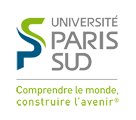Thematic school on Contact and Symplectic Topology
|
Juan Carlos Álvarez Paiva (Lille 1)
La géométrie convexe du point de vue symplectique
La notion de dualité est centrale à la géométrie convexe et aucun langage ne permet d'exprimer cette dualité mieux que la géométrie symplectique et sa soeur impaire, la géométrie de contact. Cet exposé fera le point sur l'utilisation des techniques et points de vues symplectiques dans la géométrie convexe, la théorie des espaces normés, et la théorie géométrique des nombres.
Felix Schlenk (Neuchâtel)
Symplectic embedding problems
It is notoriously hard to get an intuition for global Hamiltonian flows. One way to attack the problem is to look a symplectic embedding problems. The easiest such problems are of the form: Given two domains U,V ⊂ R2n, does there exist a symplectic embedding U → V? This question is already hard for U a disjoint union of balls, and V a ball, but in recent years there was much progress.
The results and their proofs provide links between dynamical and geometric aspects in the theory of Hamiltonian systems, the structure of holomorphic spheres in symplectic manifolds (algebraic geometry), discrete geometry (lattice point counting) and certain aspects of combinatorics and number theory. I will try to explain these different facets of "symplectic embedding problems" by looking at the simplest examples.
Federica Pasquotto (Amsterdam)
Minimax principle and periodic orbits of Hamiltonian systems
A central problem in symplectic topology is the existence of periodic orbits of Hamiltonian systems on a prescribed energy level. Symplectic invariants, such as Floer homology and contact homology, can provide information about periodic orbits. Unfortunately, the techniques necessary to construct these invariants encounter substantial difficulties when the manifolds under consideration are non-compact. In this talk we will provide some motivation for tackling the case of non-compact energy levels (coming from higher order PDE's), then discuss an approach based on a special minimax principle introduced by Rabinowitz. This variational principle can be effectively applied to prove existence of periodic orbits on, for instance, certain examples of non-compact mechanical energy surfaces.
Frédéric Le Roux (Paris 6)
Spectral invariants and topological dynamics for Hamiltonian diffeomorphisms on surfaces (I)
The displaced disk problem, formulated in Orsay in 2008, consists in proving that a small area preserving diffeomorphism of the 2-sphere cannot move a topological disk of given area disjoint from itself. We will discuss the solution provided by Sobhan Seyfaddini in 2013, which makes use of the "spectral invariants" of Viterbo-Schwarz-Oh, and try to understand these invariants from a dynamical viewpoint. In particular, we will define a topological invariant that coincides with VSO's spectral invariant for time one maps of autonomous systems. This is a joint work with Vincent Humilière and Sobhan Seyfaddini.
Vincent Humilière (Paris 6)
Spectral invariants and topological dynamics for Hamiltonian diffeomorphisms on surfaces (II)
This is the sequel of Frédéric Le Roux's talk on our joint work with Sobhan Seyfaddini. We will focus on the Viterbo-Schwarz-Oh spectral invariant whose study will have been motivated by Frédéric. This invariant relies on Floer homology. The plan is to explain the basic ideas of Floer theory, in order to define the invariant and sketch the proof of its basic properties. I will then try to give ideas on how to compute it for time-one maps of autonomous systems of surfaces, and to relate it with the topological invariant introduced by Frédéric.
Frol Zapolski (Haifa)
On an equivalence of Morse complexes of the action functional and its finite-dimensional approximations
I will explain the construction of a Morse complex of the Hamiltonian action functional in the plane, called the Floer complex. Then I will explain how to construct a finite-dimensional approximation of this functional, also known as a generating function. Finally, I will relate the Morse complex of the latter to the Floer complex.
Patrick Massot (Polytechnique)
Une introduction à la topologie de contact (I)
Klaus Niederkrüger (Toulouse)
Une introduction à la topologie de contact (II)
Les structures de contact sont des champs d'hyperplans qui apparaissent naturellement au bord de certaines variétés holomorphes ou symplectiques. L'objectif de ces exposés est de présenter trois questions concernant ces structures et les liens qu'elles entretiennent. Tout d'abord on peut fixer une variété V et chercher à lister les structures de contact qu'elle porte (à déformation près). Ensuite on peut fixer V et une structure de contact ξ et se demander s'il existe une variété holomorphe ou symplectique dont le bord est (V, ξ). Enfin, chaque structure de contact est accompagnée d'une classe de systèmes dynamiques généralisant les flot géodésiques sur les fibrés unitaires tangents et dont on peut étudier les propriétés dynamiques. La première partie (par Patrick Massot) présentera les objets géométriques et les questions évoquées en ne supposant aucune connaissance spécifique préalable et en se basant sur des exemples. La seconde partie (par Klaus Niederkrüger) esquissera comment des techniques analytiques initiées par Gromov et inspirées de la géométrie algébrique permettent de répondre aux questions dans certains cas.
Paolo Ghiggini (Nantes)
Une introduction à la topologie de contact (III)
Dans cet exposé, on montrera par les techniques de courbes holomorphes présentées dans l'exposé précédent que la seule variété symplectique et symplectiquement asphérique dont le bord est la sphère de contact standard est la boule symplectique standard, en dimension 3 (théorème d'Eliashberg-Gromov) et en dimension supérieure (théorème d'Eliashberg-Floer-McDuff).

|

|